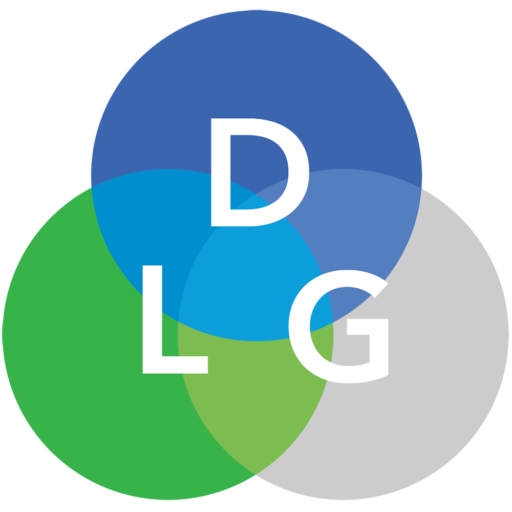Healthcare Value Analysis to manage your teams, workflows and share data
See how VAMS® can help you manage it all in one place
Drive time and waste out of your work stream to focus on what really matters.

Healthcare Value Analysis Designed for Professionals
Data Leverage Group has been focused on developing a robust workflow system for healthcare value analysis and supply chain and professionals.
DLG exists because we believe that healthcare value analysis supply chain professionals need flexible solutions to meet their numerous and ever-changing operational workflows. Most software tool companies try to convince clients to adopt their traditional “out of the box” approach with little or no adaptability to the client’s operation. DLG thinks differently…
Healthcare Value Analysis (VAMS)
With VAMS, always have the answer to… What’s the status of my request? What projects are in process? How many projects are in process? Who is responsible for next steps?Data Cleansing Services
• Item Master Cleansing
• Item Master Data Enrichment
• UNSPSC Coding
• HCPCS Codes
• GTIN Creation
• AP Vendor De-duplication & Normalization
• UNSPSC Product Categorization


Industry Advisory Service
• Value Analysis Assessment
• Supply Chain Optimization
• Complimentary Assessment
• Remote, off-site services

The Challenges of Healthcare Value Analysis in Modern Hospitals


How VAMS® Software Transforms Healthcare Value Analysis

Core features of VAMS include:
Centralized Project Management: Every request and document is stored and tracked in one place.
Customizable Workflows: Tailor approval steps and responsibilities to match your hospital’s unique processes.
Real-Time Dashboards: Gain clear visibility into project status, ownership, and pending actions.
Automated Notifications: Alerts ensure deadlines are met and that all team members stay informed and on track.
Detailed Analytics: Generate reports that measure savings, cost avoidance, and overall impact.
Secure Access Controls: Protect sensitive information with role-based permissions.
Comprehensive Reporting: Financial and operational metrics are compiled automatically for informed decision-making.
Collaboration Tools: Built-in messaging and comment features keep teams aligned without endless email chains.
With VAMS®, hospitals replace disjointed, manual workflows with a streamlined, automated approach. Instead of chasing down information or duplicating efforts, teams can focus on analyzing data and making informed decisions. This shift not only saves time but also reduces the risk of errors and enhances overall accountability. VAMS® also scales with your organization, allowing you to add new users, departments, or approval layers as your operations evolve.
The Outcomes:
Cost Savings, Efficiency, and Better Decision-Making
Hospitals that deploy VAMS® for healthcare value analysis experience measurable improvements in efficiency and financial performance. By shortening the evaluation cycle, teams can implement new products and processes more quickly, benefiting both clinical staff and patients. The comprehensive reporting tools give leaders a clear picture of savings achieved and opportunities still ahead. Hospitals often uncover inefficiencies they didn’t know existed, leading to significant long-term savings. With administrative tasks automated, staff are free to focus on initiatives that directly improve patient care. Cross-departmental collaboration becomes more effective, reducing friction between supply chain and clinical teams. Hospitals also gain stronger vendor relationships, as they can provide clear timelines, requirements, and feedback based on data rather than anecdotal information. Over time, this data-driven approach creates a culture of continuous improvement. In many cases, organizations find that VAMS® not only improves current operations but also sets a foundation for future growth. Accurate data captured today informs better forecasting and budgeting tomorrow. Hospitals can approach negotiations with vendors from a position of knowledge, backed by a clear record of performance metrics and outcomes. Some institutions even leverage the data insights from VAMS® to support accreditation, regulatory reporting, and strategic planning initiatives.

In an industry where every dollar and every decision counts
Adopting a trusted healthcare value analysis software like VAMS® is more than an operational upgrade—it’s a strategic decision that drives lasting value. When teams have access to the same accurate, up-to-date information, they can align their efforts and move forward with speed and confidence. The efficiencies gained from an automated, centralized system translate directly into reduced costs, better resource utilization, and improved patient outcomes.
The challenges of healthcare supply chain management are significant, but with the right tools, they are not insurmountable. VAMS® provides hospitals with the clarity, structure, and insights needed to transform their value analysis process. The impact is real: stronger collaboration, better compliance, measurable savings, and an organizational culture that values informed decision-making. As healthcare demands continue to evolve, having a platform like VAMS® becomes not just advantageous, but essential for long-term success.
FAQ: Current Value Analysis Trends in Healthcare
Q1. What is driving the increased focus on value analysis in hospitals today?
Q2. How are healthcare systems changing their value analysis approach?
Q3. What role does data play in modern value analysis?
Q4. Are value analysis teams becoming more multidisciplinary?
Yes. Today’s committees include supply chain managers, clinicians, finance leaders, and IT specialists. This collaboration ensures decisions support both patient care and organizational goals.
Q5. What challenges still exist despite these advancements?
Q6. How is technology shaping the future of value analysis?
Automation, AI, and cloud-based platforms are making value analysis faster and more accurate. These tools provide instant access to data, automate routine tasks, and allow teams to focus on high-impact decisions.
VAMS Success Stories
VAMS helped us simplify our decision making process across the network
We were relying heavily on a paper based va system, VAMS is now our one true resource sharing hub
VAMS unified our disparate va programs into one centralized operation in no time
Testimonials
“Prior to VAMS we were relying on emails & spreadsheets, now we manage our projects from identification all the way through final implementation in one place… VAMS”



